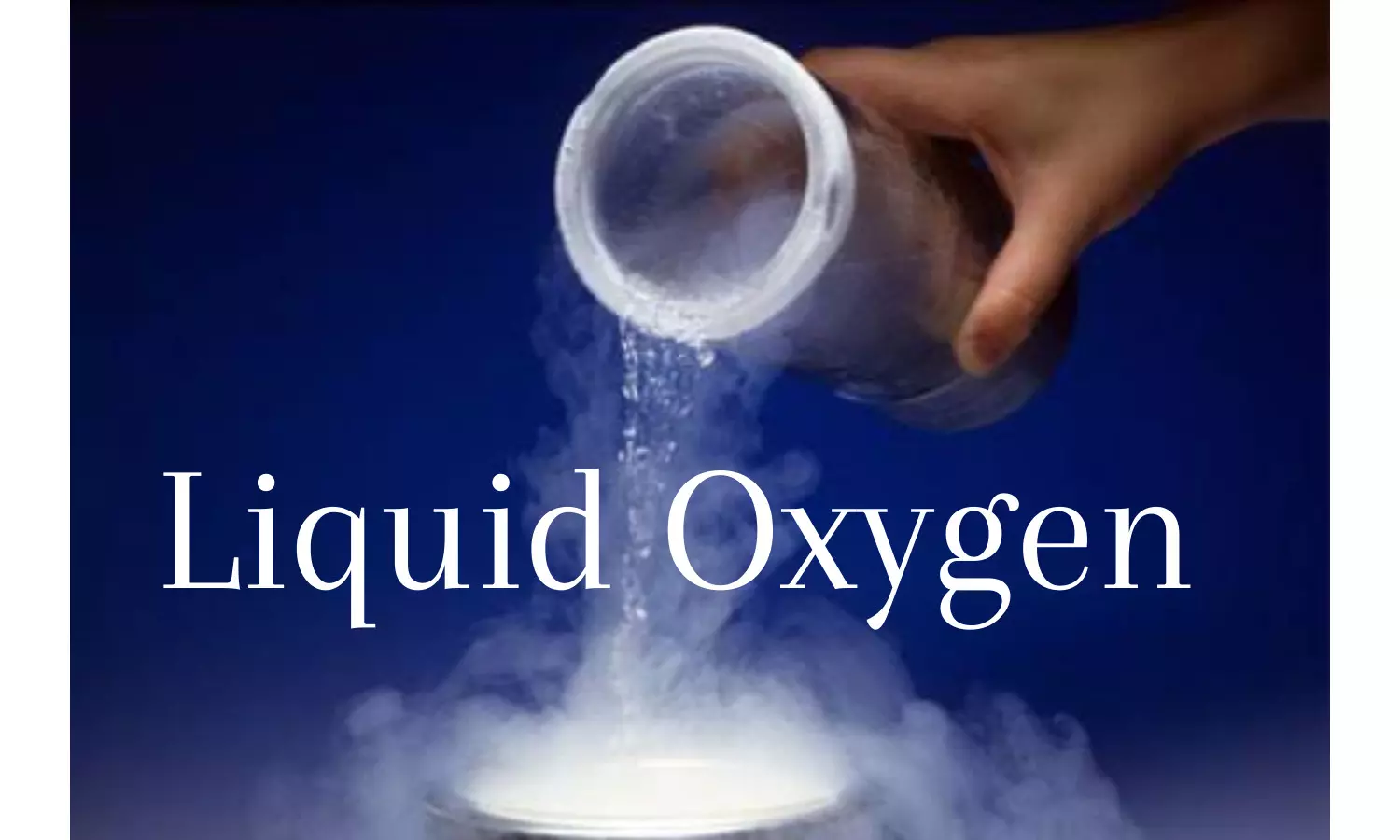Explained: What is liquid oxygen and how is it produced
By Newsmeter Network
Hyderabad: We know 65 per cent of the human body is oxygen. Yes, oxygen is vital for respiration, the process that transfers energy from glucose to cells. In fact, every cell in our body requires oxygen. When we breathe in air, oxygen molecules enter the lungs and pass through the walls of the lungs into our blood.
Oxygen is crucial for the treatment of patients with severe COVID-19 since the disease affects the lungs. Shortness of breath or difficulty in breathing is one of the most common symptoms in patients with severe COVID-19. It also hampers the supply of oxygen to various parts of the body. Hence, they need oxygen therapy, supplying medical oxygen to the body.
One of the ways in which oxygen can be supplied is through Liquid Medical Oxygen (LMO). LMO is nothing but high-purity oxygen used for medical treatment and is developed for use in the human body.
Why use oxygen in liquid state?
Due to its low melting and boiling points, oxygen is in a gaseous state at room temperature. Liquification enables storage in larger volume and easier transportation.
How is Liquid Medical Oxygen produced?
There are several methods. The most common production method is the separation of oxygen in what are known as Air Separation Units or ASUs. ASUs are basically plants that separate large volumes of gases. They use a method called Fractional Distillation Method to produce pure oxygen from atmospheric air, which consists mostly of nitrogen and oxygen - 78% nitrogen, 21% oxygen, and remaining 1% other gases including argon, carbon dioxide, neon, helium, and hydrogen.
In this method, gases from the air are separated into various components after cooling them into a liquid state and then liquid oxygen is extracted from it.
Atmospheric air is first cooled to -181°C. Oxygen liquefies at this point. Since the boiling point of nitrogen is -196°C, it remains in a gaseous state but argon has a boiling point similar to that of oxygen (–186°C) and hence a significant amount of argon liquifies along with oxygen.
The resultant mixture of oxygen and argon is drained, decompressed, and passed through a second low-pressure distillation vessel for further purification.
We then get the output as final purified liquid oxygen which is then transported using cryogenic containers.
What are cryogenic containers?
Cryogenics is the production and behaviour of materials at very low temperatures. A cryogenic liquid is defined as a liquid with a normal boiling point below –90°C. Cryogenic liquid containers are specially designed for safe and economic transportation and storage of liquefied gases at cryogenic temperatures, lower than –90°C. Liquid gases are stored at very low temperatures in these highly-insulated containers.
What is Pressure Swing Adsorption Technique?
Oxygen can also be produced non-cryogenically, in gaseous form, using selective adsorption. This method leverages the property that under high pressure gases tend to be attracted to solid surfaces. The higher the pressure, the more the adsorption of gas.
If a gas mixture such as air is passed under pressure through a vessel containing an adsorbent bed of 'zeolite' that attracts nitrogen more strongly than oxygen, a part or all of the nitrogen will stay in the bed and the gas exiting the vessel will be richer in oxygen, relative to the mixture entering the vessel.
Hospitals can also opt for on-site generation of oxygen by this method, where oxygen is produced from ambient air by concentrating it. Producing oxygen near hospitals has the additional advantage of eliminating the need for transportation.
In addition to the above sources of medical oxygen, there are also portable oxygen generators known as oxygen concentrators that can be used at home.
Safety precautions
If the temperature is high enough, many substances will burn in oxygen. Hence, it is equally essential to ensure proper fire safety measures and train all staff in the safe handling of oxygen as the increased storage and handling of oxygen cylinders during COVID-19 heightens the risk of hospital fires.
There are also additional requirements and rules for medical oxygen, including requiring a person to have a prescription to order medical oxygen.
Use oxygen judiciously
It is important for citizens to ensure judicious use of the vital product, especially during a public health emergency. Misuse or overstocking of these will only lead to panic and black marketing.
As AIIMS director Prof. Randeep Guleria said during a COVID-19 media briefing, "Judicious use of oxygen is the need of the hour. Misuse of oxygen cylinders is a serious matter of concern these days. A few people stock oxygen cylinders at home fearing that they may need it later. This is not advisable. If your oxygen saturation level is 94% or above, it still means there is sufficient oxygen in our body. There is no need to panic. Misusing the same by a person with normal levels of oxygen can deprive someone whose saturation level is well below 90% or 80%." He also said that O2 saturation of 92 or 93 should not be considered critical; instead, this level is only a buffer that enables the patient to reach the hospital on time.
Inputs from Press Bureau of India